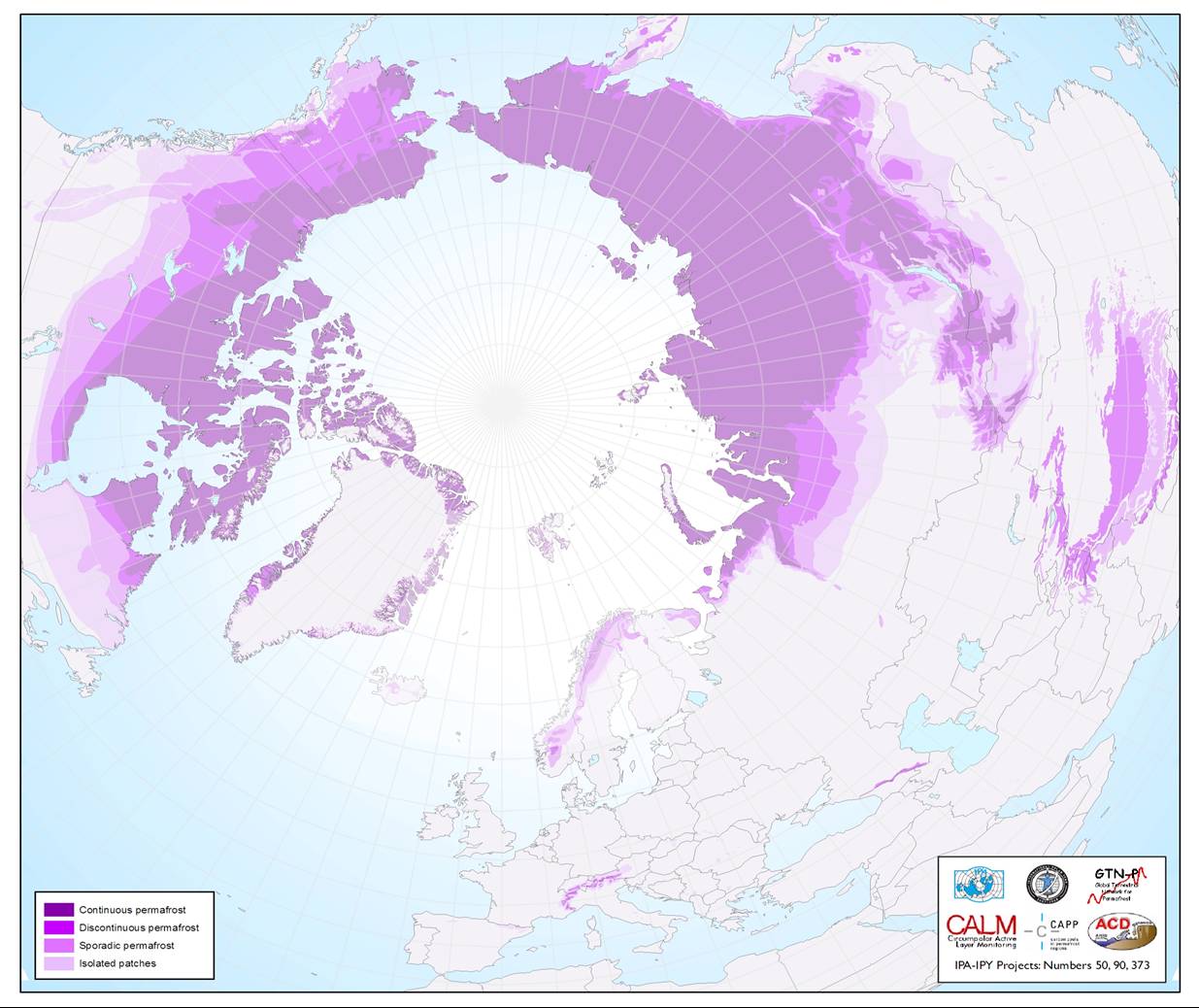International Permafrost Association Permafrost Distribution Map
Permafrost regions are defined by the percentage of permafrost that is present in the ground at a particular area (in comparison to unfrozen ground). Regions of continuous permafrost have permafrost underlaying between 90-100% of the ground and regions of discontinuous permafrost have permafrost underlying between 50-90% of the ground. Sporadic permafrost occurs in regions where the ground is underlain by up to 50% permafrost and Isolated permafrost is defined by regions with singular, remote occurrences of permafrost (International Permafrost Association).
Factors that Influence Distribution
A cool climate is required to keep land at or below 0°C so permafrost can form and continue to grow. Finer grained sediments hold water more readily than coarse grained sediments. This retention of water is favourable for permafrost development. Additionally, sediments of lighter colour reflect more solar radiation than darker sediment, allowing the ground to maintain a lower temperature. In summer, when Arctic solar radiation is high, vegetation cover provides protection from warmer temperatures and solar radiation, by reducing the permafrost land-atmosphere interaction. Conversely, in winter when Arctic solar radiation is low, snow cover inhibits permafrost generation by blocking the cool atmospheric conditions from penetrating into the ground. The thicker the snow cover, the thinner the underlying permafrost. Moreover, in the Arctic, land surfaces on a slope facing south will receive more incoming solar radiation than those facing north. This makes north-facing slopes more likely to have underlying permafrost. Additionally, steep slopes are favourable permafrost conditions since they receive less radiation and do not readily hold snow cover. Finally, inland water bodies are usually warmer than the surrounding Arctic environment, and are known to have very little or no underlying permafrost (National Park Service) (NSIDC, 2013).
Permafrost temperatures range dependent on location. Generally, permafrost in the southern hemisphere exists at lower temperatures (around -24°C) than in the northern hemisphere (0°C to -15°C). Moreover, the temperatures of permafrost within the northern hemisphere are usually lower at high latitudes as the permafrost type shifts from southern sporadic or discontinuous to continuous (IPCC, 2013).
References
Permafrost Links
Material on this page was provided by Maren Pauly, Department of Geography, University of Waterloo

